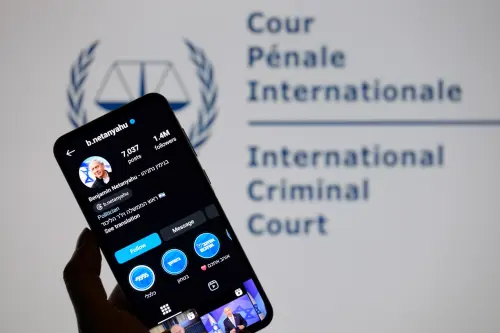Content from the Brookings Doha Center is now archived. In September 2021, after 14 years of impactful partnership, Brookings and the Brookings Doha Center announced that they were ending their affiliation. The Brookings Doha Center is now the Middle East Council on Global Affairs, a separate public policy institution based in Qatar.
International affairs are once again becoming a statesperson’s game of big stakes. Last year’s centenary of World War I spurred a debate among commentators over whether today’s global landscape was similar enough to that of 1914 that it posed comparable threats. Alongside growing multipolarity and great-power rivalry, pessimists see emerging economic cleavages, manifested most recently in China’s Asian Infrastructure Investment Bank (AIIB). Optimists argue that integration of the global economy ensures that states will see war as too costly to wage.
Both miss an essential factor: culture. Today’s power shifts have far more complex implications than did those that shook the geopolitical landscape 100 years ago, specifically because they introduce new powers that emerge from distinct cultural backgrounds.
Unlike the United States and Germany in the 19th century, today’s emerging powers encompass entirely new civilizations—some with thousands of years of cultural continuity. In this sense, Samuel Huntington’s “Clash of Civilizations” analysis, for all of its flaws, drew attention to an important aspect of international relations.
Incorporating culture into the analysis will challenge some basic assumptions. An isolationist foreign policy assumes that if the world is left to its own devices, domestic security and prosperity will not be significantly harmed. An interventionist approach relies on understanding the consequences of foreign policy actions. The “culture factor” makes both of these assumptions harder to make.
Culture’s future influence on world politics will be in a way that has long been shunned as a basis for analyzing policy—values. Most Western policymakers have thus far presumed that certain universal human traits govern international affairs. Culture was seen only as an incomprehensible wildcard, of little relevance to the game of international relations. Rational actors pursued self-interest in a global state of nature, Hobbes’ proverbial “war of all against all.” But how states define their interests, and more deeply whether rationality itself is always the driver, is open to question.
Culture influences what goals are considered worth striving for, what tools of statecraft are used, what national image is sought, and how concepts of war, peace, freedom, equality, livelihood, and development are valued. It often exercises influence subconsciously in the minds of leaders and the public.
Already we have seen culture’s impact on the language of international affairs. India has long presented an image of itself as adhering to its ancient societal ideal of non-violence. In the 1980s, then Prime Minister Rajiv Gandhi called for a new “non-violent world order.” In areas as diverse as humanitarian intervention and nuclear posture, Delhi’s rhetoric has been saturated by references to peace. While many states talk peace, India did so even when it meant sacrificing progress toward ‘rational’ strategic objectives, such as when opposing interventions in Kosovo, Iraq, Libya, and Syria.
In conflicts in the Middle East, we’ve seen militarily weak actors, for reasons of honor, projecting an image of military dominance, even to the extent of adopting the mantle of the aggressor. If purely rational calculation and self-interest had governed behavior, such an image would have been avoided as it attracts global animosity, making attacks by adversaries seem more justifiable. Even when material interests drive government actions, cultural values influence how acceptable these actions are to their publics.
Beyond rhetoric, we see culture’s hand in state behavior as well, particularly as Asian and other powers rise and exert greater strategic autonomy. Rather than purely security imperatives as most Western analysts would predict, India’s nuclear weapons policy is fueled also by the quest for international standing. When combined with the value of non-violence, nukes are considered symbolically important but militarily unusable. The benign nature of India’s nuclear strategy made it easier for the United States and others to justify giving Delhi special treatment in nuclear cooperation.
Similarly, Chinese policy is colored with the concept of mianzi, or face, where priority is placed on social recognition by others. A country’s rank within the international hierarchy of status is highly important. Relations with others and context is paramount; individuals have no meaning.
Indian born and Chinese practiced, Buddhism promotes the acceptance of impermanence and changeability. This has significant implications for how China’s foreign policy, including ideology and alliances, is conceived. It may also help explain both these countries’ gradual transitions to market economies, as opposed to the more abrupt upheavals seen in Eastern Europe.
Thus far, most non-Western countries (e.g. Japan) have operated using European-sourced institutions of statecraft, within a Western-style nation-state system. This made predicting behavior at least somewhat possible. But as the European half-millennium draws to a close, states, and other actors, may reshape their institutions, strengthening the unpredictable hand of culture even more.
The AIIB, China’s rival to the World Bank and International Monetary Fund, is a parallel institution. Its challenge can be gauged, making it possible to respond. Future initiatives by Beijing, however, might not be so easy to categorize and therefore, harder to deal with. The culture factor will throw up ‘unknown unknowns.’
Cultural values impact more than just states’ conduct of their foreign policies. The current international configuration of sovereign nation-states itself is rooted in European modernity. Non-European cultures may exert differing views on international organization. A bellwether will be how rising powers engage with international law. While Western culture sees society as individuals relating to each other through rules and contracts, Chinese scholars highlight a more interconnected worldview. This has significant implications for concepts such as human security and human rights.
Ensuring the peaceful rise of new great powers requires more in-depth and organized effort among Western governments to understand the cultures of Asia and elsewhere. Between West and East, North and South, there is a propensity for peoples to perceive separate realities.
Just as early 20th century institutions like the League of Nations did not survive the disengagement of the then-rising America, the current international system may not survive disengagement by today’s ascendant powers. The return of culture is not just a debate for theoreticians in universities. If statesmen are to handle the big issues of security and prosperity in a multipolar world, culture is the wildcard they can no longer ignore.
An earlier version of this piece appeared in East Asia Forum.
The Brookings Institution is committed to quality, independence, and impact.
We are supported by a diverse array of funders. In line with our values and policies, each Brookings publication represents the sole views of its author(s).



Commentary
Western policymakers need more culture
April 21, 2015